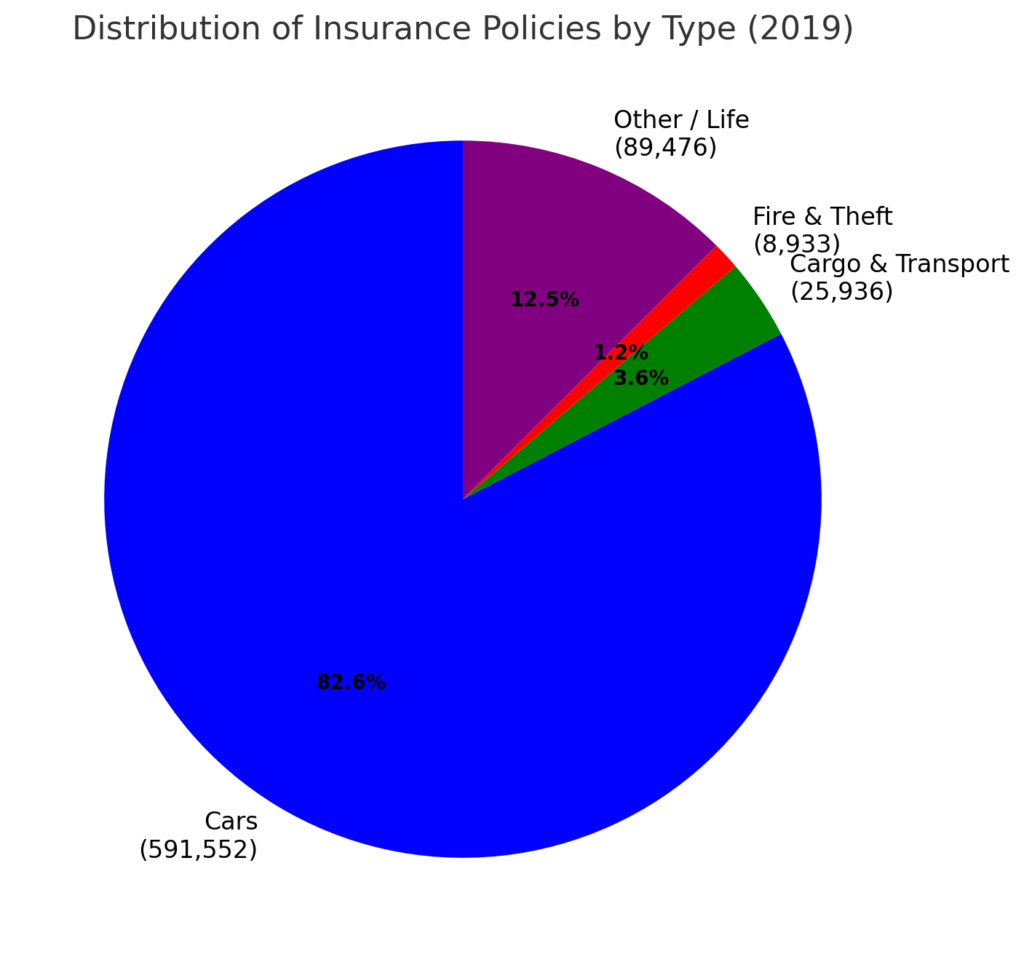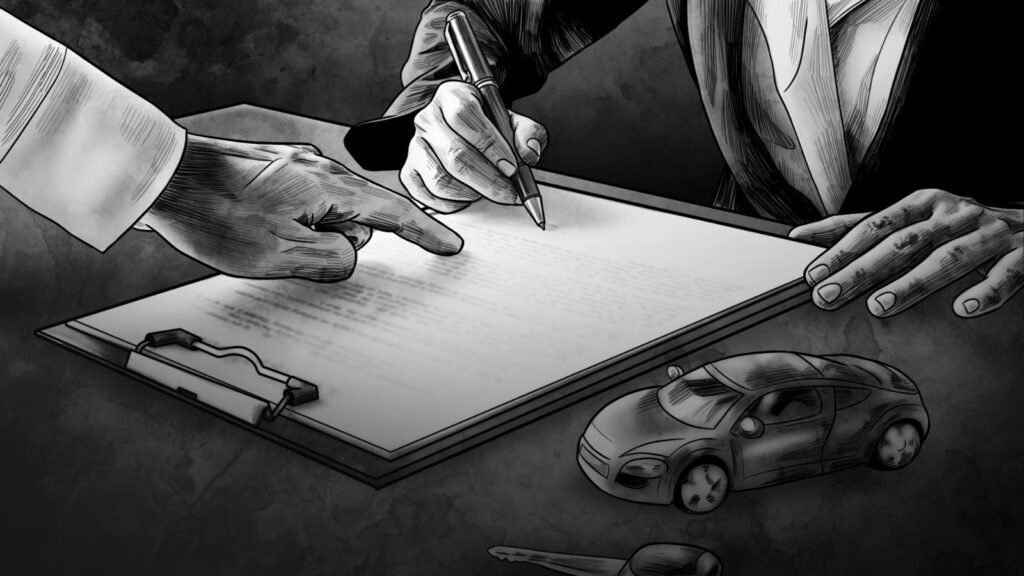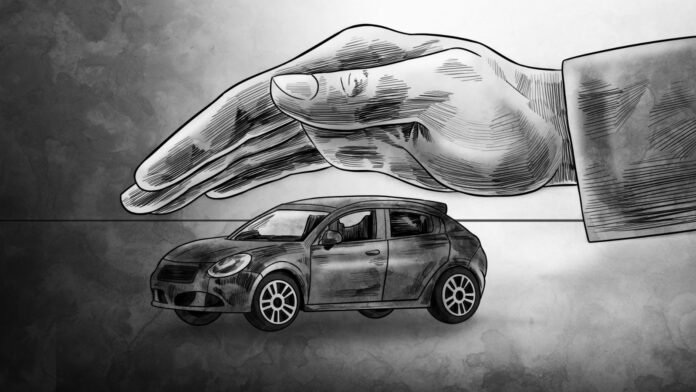American mathematician and economist Milton Friedman, a strong advocate of capitalism and the son of Jewish immigrants to the United States who arrived in the early 20th century from what is now Ukraine, faced an unexpected and embarrassing criticism from a leftist activist while receiving the Nobel Prize in Economics from the King of Sweden in 1976.
However, this did not undermine Friedman’s theory, which he wrote about in 1948 with his colleague Leonard Jimmie Savage in a research paper titled The Utility Analysis of Choices Involving Risk, where he compared insurance to gambling. He argued that “a person who buys a fire insurance policy on their home prefers to bear a small, certain financial loss (the insurance premium) rather than remain at the mercy of a mix of weak probabilities of a large financial loss (the full value of the home), versus a high probability of losing nothing, meaning they prefer certainty over uncertainty.”
This comparison between insurance and gambling raised concerns among some Islamic jurists, who criticized it for resembling gambling, uncertainty, or deception, as all participants pay the insurance premium, but only a few benefit from compensation when the insured risk occurs.
On the other hand, other scholars argue that insurance is permissible since it does not contain the prohibitions of gambling, uncertainty, or deception. They argue that insurance is not a sale contract but a form of previously unknown solidarity, and no explicit religious text forbids it.
Some jurists, such as Ali Al-Khafif, Professor of Islamic Law at the Faculty of Law, Cairo University, specifically prohibit life insurance but permit insurance on properties, goods, and vehicles.
Many contemporary scholars have worked to develop an Islamic form of insurance, which has led to the establishment of numerous Islamic insurance institutions subject to Sharia supervision.
Vehicle Insurance in Qatar
The history of car insurance in Qatar dates back to the mid-20th century, specifically in 1964 when the country experienced rapid development in infrastructure and transportation, which increased the need to regulate vehicle insurance. One of the early legislations in Qatar for regulating insurance was Law No. (1) of 1966, concerning insurance companies’ and agents’ supervision and control.
In 1988, Qatar signed the Unified Insurance Card Agreement for cars travelling across Arab countries, which regulates cross-border vehicle insurance within the Arab world.
Regarding the legal obligation of insurance, Article 89 of the Minister of Interior’s Decision No. (6) of 2010, issuing the executive regulations of the Traffic Law issued by Decree-Law No. (19) of 2007 states that “insurance on mechanical vehicles is mandatory for third parties and passengers, including the vehicle’s driver.”
The same article states, “The insurer is obligated to cover civil liability arising from material and bodily damage resulting from vehicle accidents within the state’s territory. The insurer is liable for compensation, regardless of the amount, including death, bodily harm, or any other physical injury.”
As infrastructure developed and cars increased in Qatar during the 1950s and 1960s, the need for car insurance began to emerge. However, it was relatively limited and unorganized at first.
In the 1970s and 1980s, local and regional insurance companies were established that began providing car insurance services more organized, and the government started setting legal frameworks to regulate insurance operations in general.
With continued economic growth in Qatar and the rising number of vehicles, car insurance became more widespread and eventually mandatory for third-party coverage. Insurance regulations were improved, and public awareness of the importance of insurance was increased.
At the beginning of the new millennium, Qatar saw significant updates in the insurance sector, including car insurance. Regulations became stricter with the introduction of technology and updated legislation in line with international standards.
Today, car insurance in Qatar is an essential part of the legal system. The law requires all car owners to obtain insurance covering accidents and damages to protect individuals and property.
According to a 2019 Planning and Statistics Authority report, the total number of insured cars in Qatar reached nearly 600,000.

History of Insurance
In her book Mandatory Insurance for Liability Arising from Car Accidents (2010), Dr Nadia Yas Al-Bayati states that insurance first appeared at the end of the 12th century to address marine risks, later extending to land-based activities, particularly following the rise of industrial capitalism.
The 20th century witnessed significant expansion in civil liability as industrial progress and increased use of machinery led to a sharp rise in accidents. Traffic accidents have become a severe problem in most developed countries.
As the number of traffic accidents and resulting physical and material damages increased, it became essential to establish legal mechanisms to protect individuals from the financial burdens these accidents could impose. Legislators introduced laws requiring individuals to obtain insurance against civil liability arising from traffic accidents, aiming to protect victims from the inability to receive compensation and ensure their right to compensation for damages suffered.
This law imposes multiple provisions covering damages that affect the insured’s financial position due to their responsibility for an accident. This insurance serves as a safeguard, protecting the insured from heavy financial burdens resulting from a traffic accident and shielding them from the risk of financial insolvency if unable to bear these costs.
Additionally, insurance enables the affected party to obtain their right to compensation without the need to pursue the person responsible for the accident, as the insurance company covers the damages.

Mandatory Insurance in Certain Cases
In a study by Dr Rahima Ladgash and Dr Salima Ladgash titled Mandatory Insurance for Liability Arising from Car Accidents (2020), they found that mandatory civil liability insurance not only protects individuals responsible for accidents but also extends to protect society as a whole.
Insurance helps reduce the number of legal disputes related to accidents, ensures fair and prompt settlement of such cases, and boosts public confidence in the legal system, encouraging compliance with traffic and safety laws.
Mandatory insurance protects traffic accident victims by compensating them for physical or material damages. It alleviates the burden on the person responsible for the accident while ensuring that victims receive their full rights, promoting justice and equality in society.
In this context, civil liability insurance has become the optimal solution to balance compensating victims and protecting the financial standing of those responsible for accidents. This system shifts the burden of compensation from the individual to the insurance company, allowing the responsible party to avoid bankruptcy or significant financial burdens from accidents.
Liability insurance is not just a means of compensating victims; it also protects the financial standing of those who may face substantial claims due to accidents resulting from errors or negligence.
Insurance allows for better distribution of financial burdens, with insurance companies responsible for compensating victims instead of those at fault. However, in behaviour warranting criminal penalties, such as gross negligence or intentional acts, the accountable party remains criminally liable even if the insurance company covers financial compensation.
In modern times, liability insurance has become essential to the legal system, enhancing the guarantee principle for victims. It is considered the best assurance for compensating accident victims, proving more effective in covering damages than other social protection mechanisms.
Legislators have recognized the importance of insurance, issuing laws mandating civil liability insurance, especially for traffic accidents or damages caused by machinery.
One key feature of modern law is mandatory insurance across various fields. This requirement marks a shift from the traditional concept of contractual freedom prevalent in the 19th century when individuals were free to contract or not, choose their contractual partners, and determine the terms.
Today, mandatory insurance reflects a shift towards protecting individuals and society from significant economic damages that may arise from accidents.

In the 20th century, the freedom to contract became limited due to social necessities and the need to protect victims. Insurance emerged to ensure this protection, taking on a significant social role beyond individual contractual freedom.
The French legislator first regulated insurance in the Law of July 13, 1930, which included monitoring insurance contracts and regulating the operation of insurance companies, leading to greater control over the sector. Additional laws were introduced to strengthen mandatory insurance, such as the June 14 and December 30, 1938 decrees, which established a legal framework for these operations.
Mandatory insurance in fields such as transport and public health significantly impacted society. For example, on February 27, 1958, a law made motor vehicle insurance compulsory. Before this law, 95% of car owners were insured voluntarily, but the insurance rate for motorcycle owners was low. Over time, the scope of mandatory insurance expanded.
Nearly 50 fields are subject to mandatory civil liability insurance, especially in transport and various professions. Compliance with insurance regulations is also linked to civil and criminal violation penalties.
Laws require insurance companies to offer contracts that provide the minimum mandatory legal coverage, and authorities monitor these contracts to ensure they align with legal standards and do not exclude risks that must be covered by law.
The obligation to insure requires a balance between rights and duties, assuming that the insurance company fully covers the insured who fulfils all their commitments. However, the public order also requires that contracts be fair and comprehensive to prevent the insured from finding themselves outside the protection scope due to contractual loopholes or exclusions of specific risks. Therefore, monitoring insurance companies is critical in meeting these standards and ensuring complete protection for insured individuals.
In many countries, legislation has been established to implement mandatory insurance to cover liabilities arising from car accidents and ensure victims’ rights.
For example, mandatory insurance laws were enacted in Sweden in 1929, Italy in 1930, Belgium and Switzerland in 1932, Morocco in 1941, Egypt in 1955, Japan in 1958, and Algeria issued a decree on mandatory car insurance and damage compensation in 1974.
To apply civil liability for car accidents, a critical condition is damage directly caused by the vehicle’s action. The mere presence of the car at the accident site is insufficient; its intervention must be effective in causing the damage. Additionally, the vehicle must be under the custody of the person accused of causing the accident, which is known as the causal relationship.




